No, the Holden Commodore isn’t just a rebadged Opel. With this three-part history, we’ll show you why
IT SEEMS every mention on social media of the late Aussie-built Holden Commodore stirs an army of sleeper-cell keyboard warriors. They crack their knuckles and set to, spewing falsities as fact. The main crux of their argument tends to be that the Commodore was never anything more than a rebadged Opel anyway, and therefore not something to be grieved.
It’s true that the VB-VH Commodore bears more than a passing resemblance to the Opel Rekord/Commodore/Senator of the same era, but to disregard the Holden as merely a locally assembled Opel is an affront to the hardworking engineers, stylists and line workers who helped forge the Aussie Commodore legend over the past 40 years. It might have had its design origins in Opel, but the Commodore was developed by Aussies and forged from BHP steel by our very brothers and sisters – a true local hero.
So we’re going to dispel some rumours, separate fact from fiction, and give the Holden Commodore the tribute it deserves.
Holden Commodore VB
It’s no secret that the early Commodores shared much with the Opel Rekord E/Commodore C/ Senator A; it’s there for all to see. The halls of General Motors at the time were abuzz with ‘World Cars’ – platforms that could be modified to suit various local markets – and thus by 1974, Opel’s concept drawings had arrived in Fishermans Bend.
August 1975 saw Holden’s designers dispatched to Germany, and after three weeks of study, it became obvious that the trusty red six and Holden V8 would not fit into the Rekord’s stubby nose. Fortunately, Opel was concurrently developing the upmarket Senator, based on roughly the same shell with a six-window glasshouse and a larger frontal area, with an engine bay designed to swallow a straight-six.
Opel was keen for Holden to follow its lead, suggesting Holden offer local versions of both the Rekord and Senator, but the Aussies were having none of that; we were to have the same body across all spec levels, with the Senator nose married to the Rekord shell, as per Opel’s own mid-spec, but ultimately unpopular Commodore C. While they were at it, the Aussies convinced Opel to ditch the proposed recirculating-ball steering in favour of rack-and-pinion – crucial if the V8 was to fit.
Holden’s development of the Commodore went well beyond bunging two Opel designs together and whinging about steering systems. Once on Aussie soil, Holden’s styling team set about ensuring that locals would warm to the Eurocentric Commodore. They workshopped a bunch of frontal treatments, including a weird twinheadlight ‘Premier’ version, along with a heap of different grilles, before settling on the now-familiar cheese-grater – a design picked up by Vauxhall and Daewoo for their own V-platform projects.
While exterior stylists massaged the Eurodore into something that would appeal to Aussies, Jacqui Sutherland, a young chemical engineer, spent 18 months developing new interior vinyls that emitted less sticky crap on a hot day. She solved a problem the Germans hadn’t even thought of, let alone solved!
Unfamiliar environmental extremes weren’t limited to our temperatures; Australia’s notoriously shitty roads also proved eye-opening to the Europeans. An early Rekord prototype was set to task on the roughest tracks within Holden’s Lang Lang Proving Ground; the grille fell out after 50 kays, and the thing was scrap by 1500 – hardly a car saleable to the Australian public.
Later Rekord prototypes attacked real-world conditions in the Flinders Ranges, with one splitting apart at the firewall. Strain gauges were fitted to the front stub axles, steering column and rear suspension and the data sent to the boffins at Opel, who noted the inputs were 300 per cent above anything they’d ever tested at. Suspecting the data was wrong, they suggested Holden engineers check their equipment; the Aussies reported to Germany that their gear was fine, but Opel staff were welcome to offer a second opinion.
Accordingly, a bunch of Germans arrived locally in May 1976 and immediately resolved the issue; Australia needed better roads, not stronger sedans!
Among them was Peter Hanenberger, a 36-year-old chassis engineer and shining star in Opel’s suspension development team. Having previously worked on the Opel GT and the Kadett/Gemini T-car project, Hanenberger’s presence was specifically requested by Holden’s top brass. Commodore prototypes were boiling shocker fluid over corrugations, a road hazard the young German had only recently learned about. But they didn’t call him ‘Handling-berger’ for nothing, and he attacked the project with enthusiasm, despite the task ahead. “I never forget when we were in the outback and the whole front fell off; the thing collapsed,” he was quoted as saying. “It looked very sad!”
Mid-1970s Australia was still a frontier; few main highways in the outback were sealed and off-road vehicles were not yet prevalent in the marketplace. Hanenberger and the guys from Opel simply couldn’t believe that crazily attacking Aussie backroads with nothing but a locally built car and a good dealer network was the norm rather than the exception.
With that knowledge, the decision to move from the H-series Kingswood to the new Commodore was not taken lightly or immediately; in fact, Holden took some time to decide which product the new car was actually replacing; was it the Torana or the Kingswood? It must have been a busy time at Holden in the mid-1970s; people were working on a Kingswood-based Kingswood replacement (the WA), the stillborn Kingswood passenger car facelift (WB), a Torana-based five-door Commodore (VA), and the Opelderived Commodore all at the same time!
It took Chuck Chapman, Holden’s managing director from January 1976, to commit to the Opel development as Holden’s mainstay into the 80s; despite conceding around four centimetres of shoulder room, the Rekord returned better leg and headroom against the old Kinger.
Charles ‘Chuck’ Chapman, Holden boss from 1976 to 1987, oversaw the introduction of the smaller Commodore and killed the Kingswood. He made amends when he fought for the plus-sized VN in the late 80s to put Holden back on top
So was the first Commodore just an Opel in disguise? The Aussie design team overcame boiling shocker fluid, broken firewalls, gunky plastics, shit steering, stumpy noses and even public marketing clinics that pegged the Commodore as too upmarket, to deliver us a rugged local product with international looks.
The resulting VB Commodore was, despite the vast improvements, a tough sell against the larger Falcon – Holden lost a bunch of fleet sales on size alone – but in making an Aussie car with modern looks, incomparable handling and a big V8 in a tight body, it also became a legend.
Holden VK Commodore
The 1973 Arab Oil Embargo that set the wheels in motion for the smaller Commodore was, by the 1980s, a distant memory. Both Holden and Ford had gambled on their flagship products for the new decade and Ford had won the bet, refusing to downsize the Falcon and landing a bunch of fleet sales in the process.
The Commodore lost Holden the long-held numberone spot on the sales charts, despite sporty versions by HDT, V8s available across the range and multiple Bathurst wins. Such honours couldn’t make up for taxi, police and rep fleet sales; plus the XE Falcon finally received a bunch of improvements that Ford should have applied with the XD of 1979.
Legendary Holden design boss Leo Pruneau pasionately disagreed with the axing of the Kingswood, but did impressive things with the Commodore to hide its size deficit
Leo Pruneau’s design department wasn’t allowed any major sheet-metal changes for the VH Commodore, instead relying on horizontal lines, a thinner grille and larger tail-lights (especially the extra bits on the SL/E) to give the illusion of greater size. But even Pruneau’s beloved ‘Shadowtone’ option on the up-spec SL/E wasn’t enough to sway buyers looking for automotive real estate.
The VK range introduced polycarbonate bumpers and broad side mouldings in an attempt to give the small Commodore more visual clout, but it was only six months out from launch when the masterstroke was realised: a six-window glasshouse.
Opel’s luxury Senator featured a larger, six-window layout from the outset, albeit with entirely different rear quarters and tail. Holden stylists found they could graft this window treatment to the existing sheet metal with minimal changes to tooling, much to the chagrin of Opel, who had invested heavily in two different rear quarter stampings! Changing a design so considerably at a time when pilot-build cars should have been rolling out the door was unprecedented in auto design circles and probably a shade reckless, but it was necessary to freshen up the Commodore.
Initial plans for a four-model structure – two retaining the old C-pillars and two up-spec models with the sixwindow design – were nixed early on; all models got the new glasshouse, giving the car greater presence and allowing more ambient light into the cabin.
Along with the new body design, the range was renamed, dropping the Commodore L, SL/X and SL/E tags that had been used variously over the preceding three models. Instead, the VK introduced upmarket names such as Berlina and Calais, with Executive leaning towards fleet buyers who wanted to treat their staff to standard power steering, leaving the poverty-pack SL to soldier on for those on a budget.
These changes, along with significant improvements to ‘grandpa’s axe’ – the old Holden red which had, through the Commodore, been upgraded to ‘blue’ and then finally ‘black’ for the VK – saw the sales landslide slowed; Holden was clawing its way back up, with no input from Opel.
Holden VL Commodore
The introduction of tighter emissions regulations in the 1980s saw power levels and driveability drop across most makes and models globally. Drivers suffered as manufacturers scrambled to pursue economy over driving enjoyment, but it wasn’t a permanent issue; the tech just had to catch up.
Although the VK’s black motor was the pinnacle of development of the Holden red, it was a gruff old thing by the mid-80s, and something had to change. Investing in the 1960s-era six simply did not make economic sense; besides, the timeframes were insufficient. Re-engineering the car for a new donk was quicker and cheaper, so the venerable red/blue/black had to go.
It’s been well documented that the fully imported, 3.0-litre RB30 Nissan six was the replacement, but how Holden went about sourcing the engine was charmingly simple; it sent letters to a bunch of manufacturers and hoped for a response.
Naturally, nobody was pouncing on a relatively small deal to power a bunch of obscure Aussie cars, but in 1982 Nissan saved the day, providing some early-development RB30Es for Holden to install into half-a-dozen VK engineering mules.
With the OHC Nissan engine offering 11 more horses than an EFI-optioned black motor, along with better economy, it was a no-brainer. Holden struck a deal for Nissan to provide manual and auto transmissions to suit the RB30E, plus exclusive rights to the RB30ET turbo version, and the rest is history.
The RB30E went on sale in Australia before it was even released in Japan, and despite the imported engine dropping the Commodore’s local content from 87 per cent to 79 per cent, even the most ardent Holden supporter was turned after one drive. And the Turbo version became Holden’s hero car of the 80s.
Silky-smooth engine aside, another key to the VL’s continuation of the upwards sales swing was styling; gone was the Opel Senator’s tall, V-shaped front in favour of a longer, broader nose with headlights that could be partially hidden for the stylish Calais.
Windows too were revised, with the addition of wide plastic trims to give the illusion of greater size and sharper angles. If you’ve ever wondered why your VL is covered in a shitload of plastic, this is why! Down the back, stylists mildly revised the rear quarters and boot lid, creating the VL’s trademark ‘kick’, another tactic to visually extend the length of the car.

Continuing the V8 allowed Holden to win over plenty of private buyers for whom only a 5-point-0 would do; in doing so they retained a sporting reputation that the Falcon squandered. Holden’s sales figures were on the up, but despite all the attempts to make the Commodore look bigger, it simply wasn’t; fleet buyers knew that and the Falcon remained king of the charts, with the roomy Magna knocking on the back door. The next Commodore had to not just look big; it had to be big. But would Holden need Opel’s ‘help’ again? Find out next month.
Both Holden and Nissan went skitz when Japan’s Car Graphic magazine, via Wheels editor Peter Robinson, revealed that the RB30E would power the next Commodore. As Robinson readied the scoop for his own magazine, both companies sought an injection against then-publisher ACP. Refusing to reveal his sources, Robinson and ACP lawyer/future PM Malcom Turnbull agreed to pull the story rather than be held in contempt of court
SPECIAL EDITION COMMODORES
• Commodore Vacationer sedan and wagon (VC, VH, VL)
• Commodore 50th Anniversary sedan (VC) – celebrating 50 years since establishment of GM-H
• Commodore SL National Police Pack (BT1) sedan and wagon (VK, VL)
• Commodore Series 200 sedan (VL)
• Calais wagon (VL)
HOLDEN COMMODORE – THE FACTS
• According to Bill Tuckey’s book Commodore: Lion King, the concept of marrying two different Opel designs came from Holden and inspired Opel to create its own version. The mid-spec Commodore C came out in late 1977, sitting between the Rekord and the Senator, which had come out a few months earlier.
• Bodyshell significantly strengthened to cope with Australian conditions
• Body re-engineered to suit Aussie red/blue/black six and V8
• Unique interior plastics to reduce gross plastic film build-up in hot weather
• Holden forced Opel to install rack-andpinion steering across the V-car range
• Other names considered: Kingswood II, Cutlass, Torana, Senator and Delta
DID YOU KNOW?
• The VC and VH Commodore were engineered to take Holden’s rough and unloved Starfire four-cylinder, but the VK model also received the Starfire – for export only, thankfully!
• The silky-smooth RB30E engine powered the VL Commodore in Australia, but in New Zealand an RB20E 2.0L was also available
• NZ also copped the Commodore Royale, a locally assembled, budget-build luxury pack sharing features with the SL/E and Calais, but made do with the Starfire four (VH and VK) or RB20 2.0 six (VL, with the RB30E as an option)
• The basic styling of the early Commodore sedan and wagon can be credited to Opel, but we Aussies missed out on a bunch of other versions including a two-door sedan, two-door wagon and the fastback Monza coupe, one of which was modified by Peter Brock into the prototype 5.0L HDT Monza
• Aside from the Opel range, other V-platform ‘world cars’ include the Vauxhall Carlton, Viceroy, Royale and Senator (UK); the Chevrolet Rekord and Commodore (South Africa); and the Saehan/Daewoo Royale (South Korea), which was assembled using Aussie-pressed panels
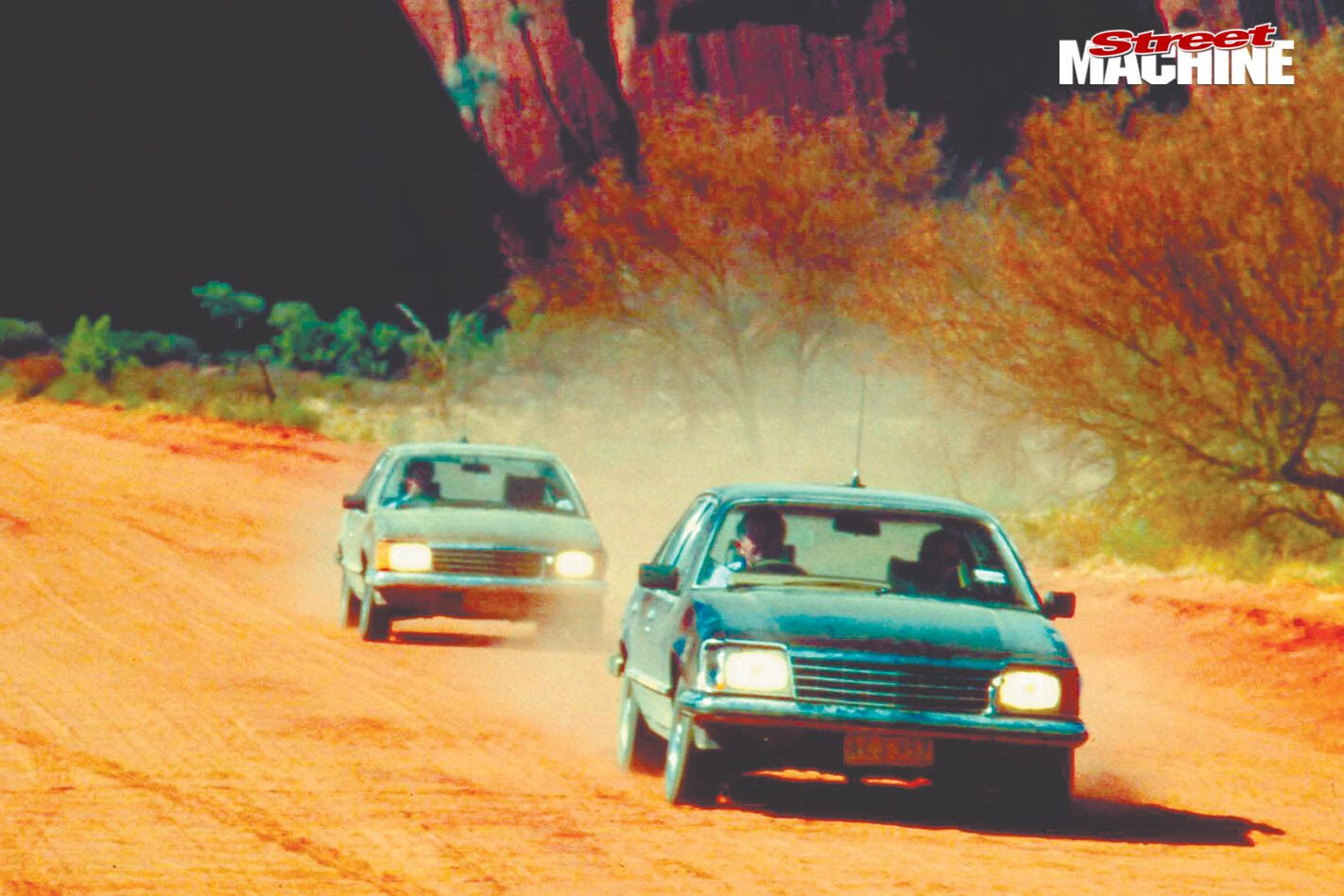
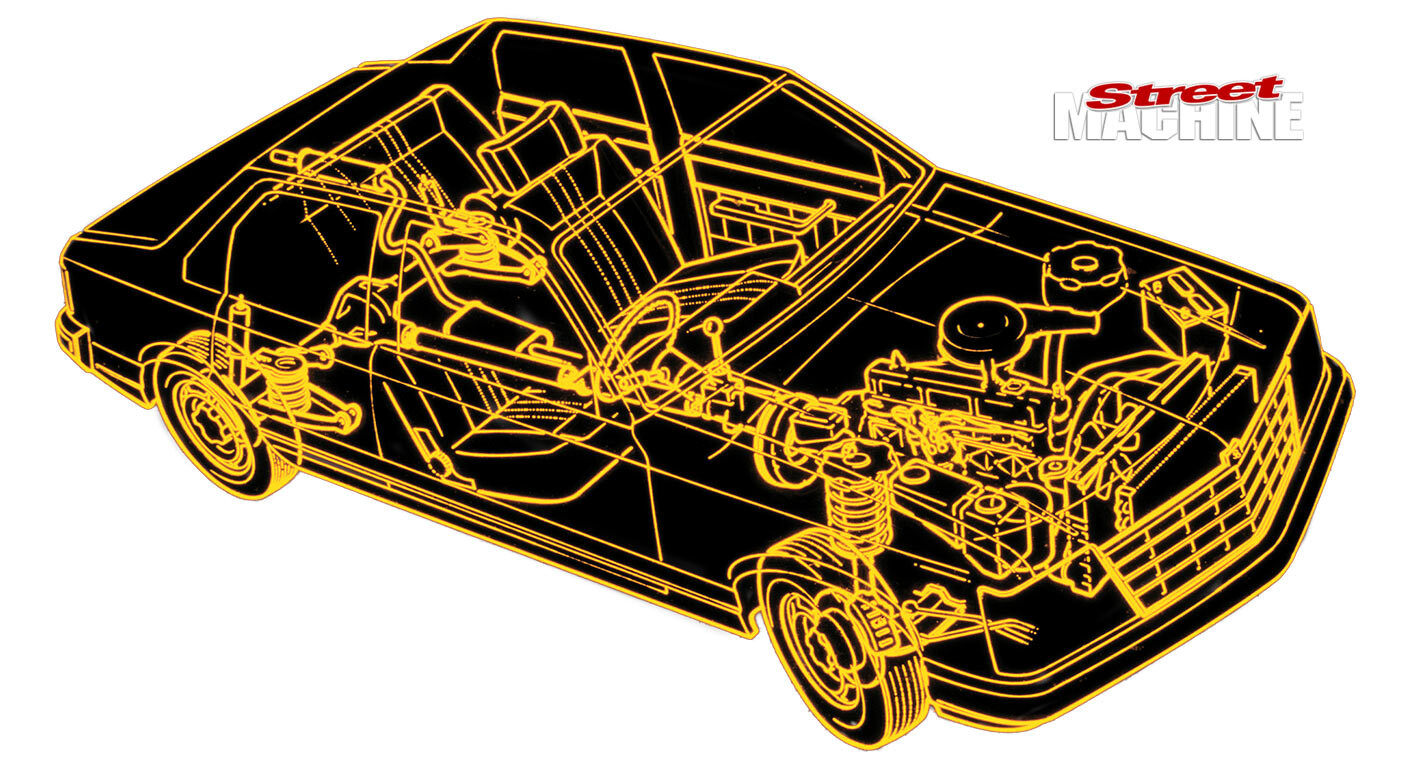
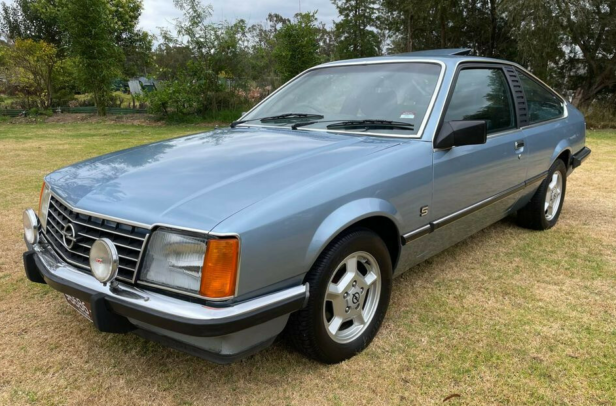
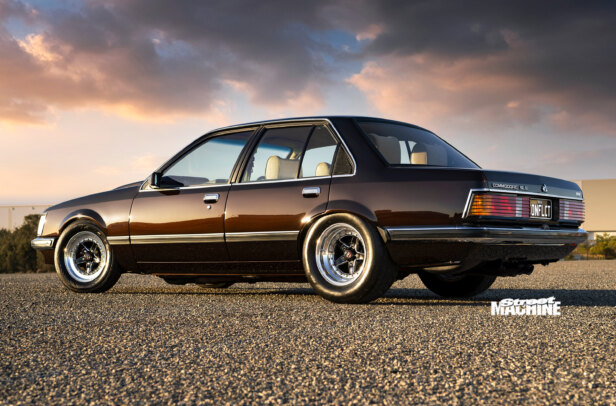
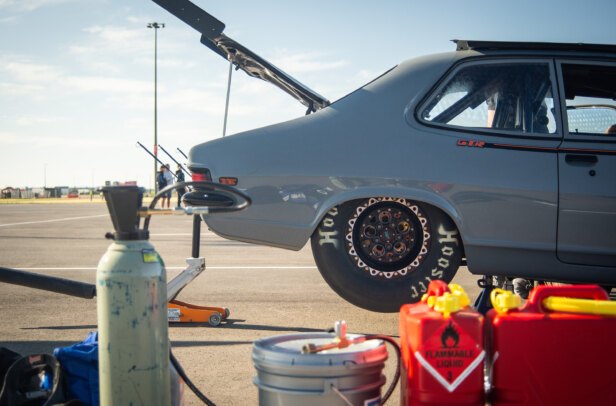
Comments